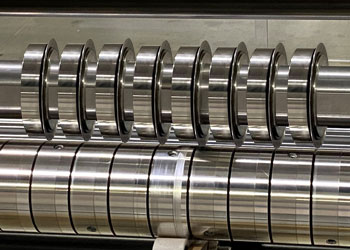

April 24 2023
John Marold, Applications Engineer- Slitting Specialist , Gabriela Martin, Marketing Coordinator

In the world of slitter rewinders, achieving a tight slit width tolerance is essential to the operating process for many applications. To ensure a tight tolerance is achievable, proper alignment and minimal movement leading up to the slitting of the final product are necessary. The main method of accomplishing this tight tolerance is through the wrap shear slitting process, specifically by utilizing the contact arc wrap slitting technique. While shear slitting includes both tangential slitting (also known as kiss slitting) and contact arc wrap slitting, the wrap slitting method enables operators to accomplish a more precise and consistent width of the material. Even though tangential slitting allows for the fast setup of individual female knives, the open gaps between the female knives cause a lack of complete web support, so it is ineffective for achieving a tight tolerance in slitting. In contrast, the contact arc arrangement of wrap shear slitting eliminates these gaps so that the bottom female knives and spacers completely support the web.
What is the function of the wrap shear slitting process?
Within the wrap shear slitting process, accurate slit widths with tight tolerances are proven possible through the use of precision spacers to position the female knives. The web is wrapped around the female knives while being positively supported by a fully stacked shaft with knives and spacers. Under a controlled tension, while being fully supported, the material has no movement that could lead to unwanted sags or pulls. This combination of web support and properly balanced tension holds the web in place, resulting in uniform slit width and tight material tolerance.
How can this process aid in achieving a tight tolerance?
While certain product applications have a more forgiving tolerance, the contact arc wrap shear slitting technique can be transformative to slitting web materials for the many applications requiring a tight tolerance. For example, the resulting product might be a pipe made from the web material that is only perfectly aligned when its edges are wrapped around to form a 3” diameter circle with no overlap of the material and both sides touching to form one even layer of the tube. If a tight tolerance were not achieved in this situation, the tube might have nonuniform and overlapping material, rendering the finished product of the pipe to be unusable and inoperative. However, with the use of wrap shear slitting, a tight tolerance could be easily attained to fulfill the rigid requirements of this product. Furthermore, this form of slitting is the proven method for achieving tolerances as tight as +/- 0.003” (0.076mm) depending on the material being slit, meaning the deviation from precision is practically nonexistent.
What are the pros and cons to using pneumatic vs. shafted male knives in the wrap shear slitting method?
While wrap shear slitting with male and female knife shafts stacked with spacers and knives is the sure route to achieving a tighter tolerance, there are also certain benefits to using pneumatic male knives. For instance, the pneumatic knife holder design offers an adjustable cant angle, improving the overall cut quality and possibly make the knives last longer. It also permits users to adjust the overlap independently for each cut to modify the quantity of overlap before the knife holder is pneumatically engaged. However, due to the physical space required for the pneumatic knife holder's functional parts, the narrowest slit width possible is 1,” whereas the shafted system can slit widths down to ¼”.
The shafted slitting system is designed to achieve the tightest tolerance and the narrowest slit width allowable in the shear slitting method. Another benefit to having shafted knives in the shear slitting method is that the shafted system has a driven male knife along with an over sped female knife shaft, which will prevent dragging of the material that can often occur with the use of the pneumatic knife. However, the downside to shafted slitting systems is that they are not as easily adjustable when changing slit widths or correcting mistakes because the knife shafts would need to be removed from the machine and individually restacked.
Therefore, there are pros and cons to using both pneumatic and shafted knife holders in the wrap shear slitting system. Even so, we acknowledge that the more classic shafted wrap shear slitting method with spacer stacked shafts allows for the tightest tolerance and narrowest slit width possible. This is why we continue to advocate for this successfully proven slitting technique at Parkinson Technologies.
Why go to Parkinson Technologies?
At Parkinson Technologies’ Dusenbery Converting Systems brand of converting equipment, our engineers and technicians are well acquainted with the vast variations of slitter rewinder machinery in the plastics, paper, and nonwovens industries, and we are consistently seeking new ways to further improve our technology and product offerings for our customers. We look forward to answering any further questions you may have concerning our Dusenbery converting systems or how achieving a tight tolerance through wrap shear slitting can be beneficial to your specific company’s slitter rewinder process.
For more information regarding Parkinson Technologies Dusenbery Converting Systems brand of slitter rewinder converting equipment, please complete the form below.